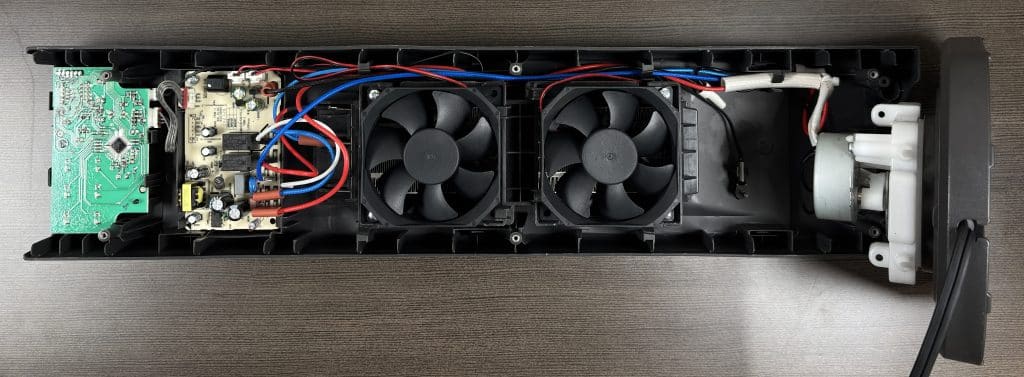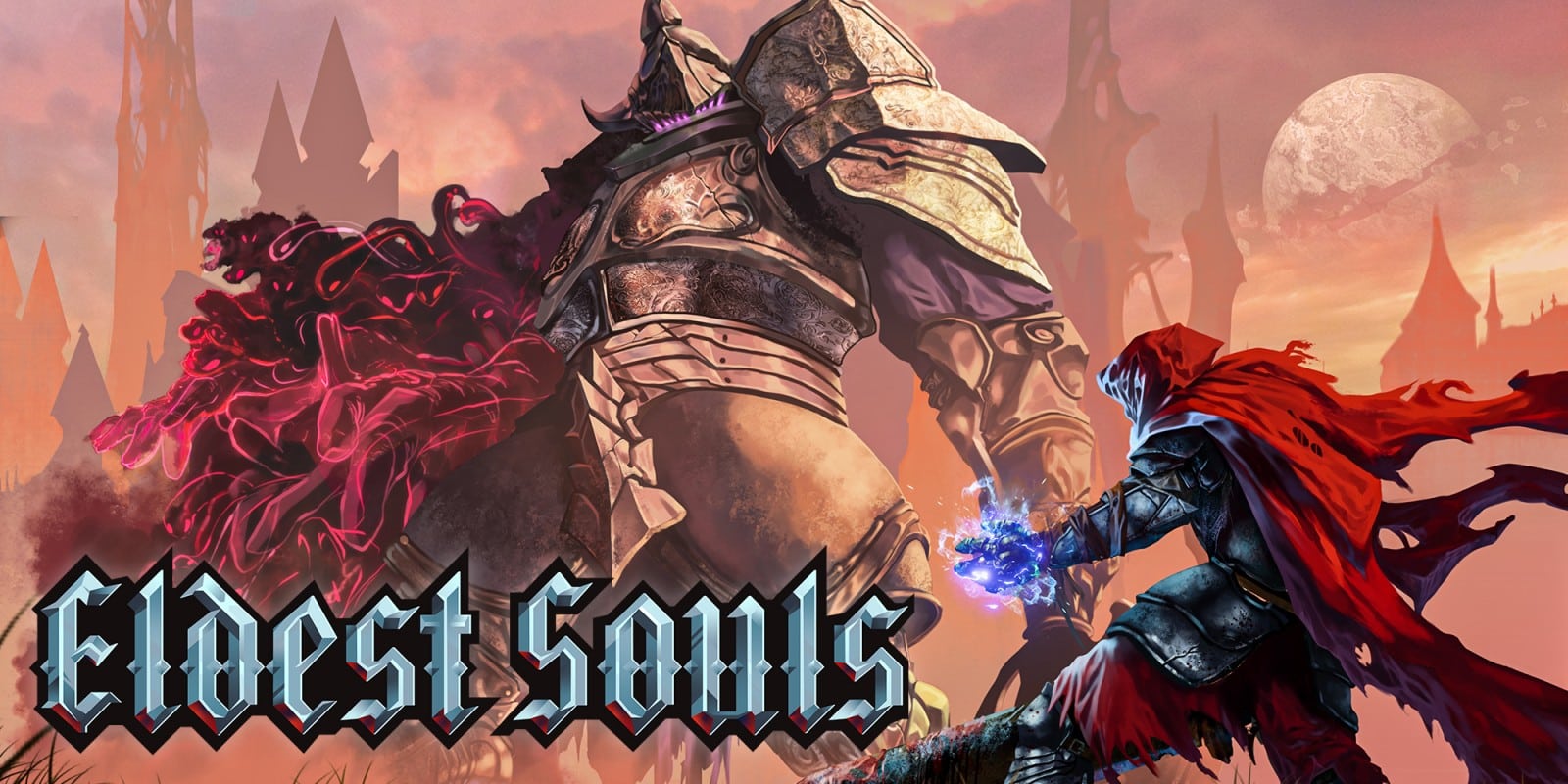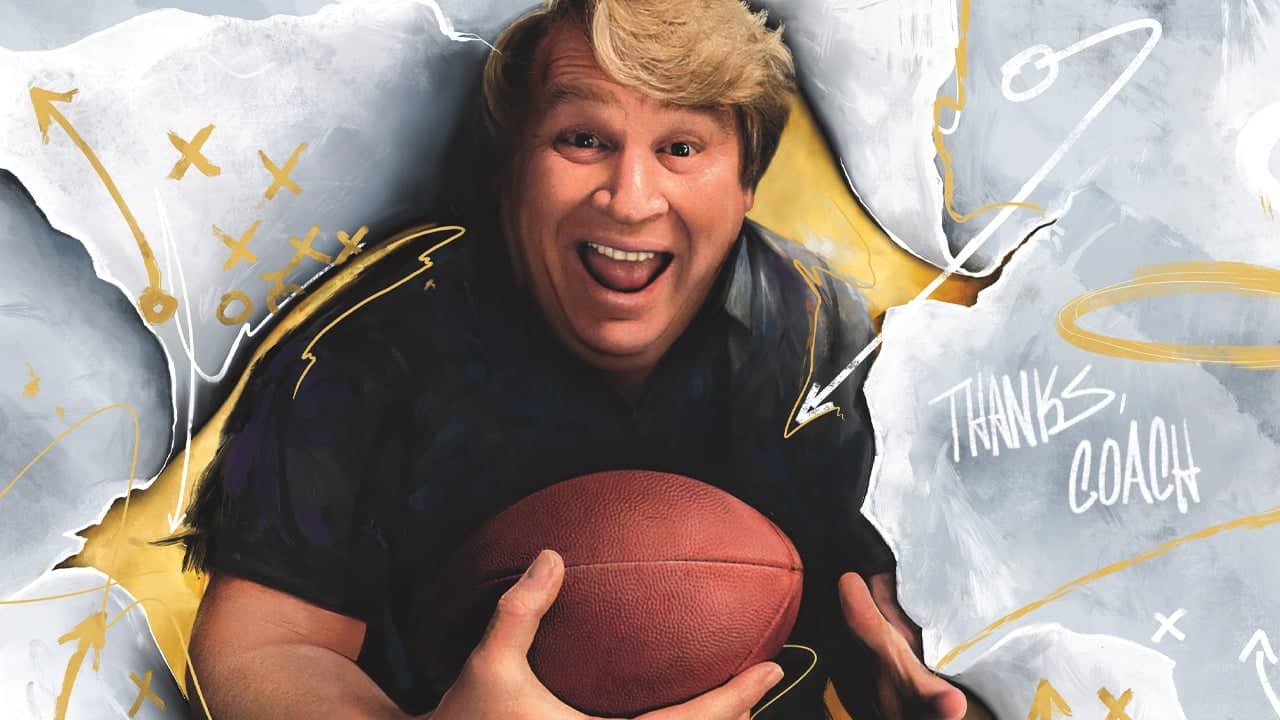Over the past 30 years Pelonis has helped set the standard for fan/heater quality and safety. This has resulted in a diverse range of offerings from simple desk fans, all the way to their own smart line of products. For this review we’re going to look at their 23″ PTC Fan Heater (2024), also known as PHF15RSAPH23, to see how it performs. Does it live up to this reputation, or is it another heater in a crowded space?
Pelonis 23″ PTC Fan Heater (2024) Review Overview
Unboxing
Pelonis 23″PTC Fan Heater (2024) is a good example of a product designed for retail spaces. A simple design with minimal information is replaced with an eye catching color box, and a number of helpful details.
There are two designs that are repeated on the matching side of the box. One shows the product, along with key features. These include 1500W instant ceramic heating, overheat and tip-over protection, and even notes the included remote does not include AAA batteries.
The other side focuses more on explaining the differences between lines. While the chart could be better, it’s great to see. I also find it funny the box’s chart is far more thorough and helpful than the compare function on the actual website.

That’s All Online Says…
Inside the box is a single styrofoam holder, and a foam spacer to ensure the heater doesn’t move around. It isn’t the most secure package, but it will likely do the job.
Accessories
Pelonis 23″PTC Fan Heater (2024) includes a full manual, and remote. As previously mentioned, it takes AAA batteries, and those are not included.

To be perfectly honest, I am not a fan of the included remote. It’s long, feels cheap to touch, and even the button positions aren’t great. This is largely due to how I imagine most people would hold the remote.
When held with the bottom pushing into my palm I can easily access the center buttons. If I had to guess this is also how Pelonis intends for people to hold the remote. This makes accessing temperature increase/decrease, timer, ECO, and function really easy. The problem is pushing power, and oscillation requires reaching my thumb forward. It causes some slight strain for myself, though my girlfriend’s smaller hands need to change position.


Long Stretch
It honestly wouldn’t even be so bad if ECO, which is the center … button, was swapped with power. At least that way a more commonly used button, at least in my use case, would be more accessible.
In addition to bad placement, the buttons feel unintuitive. The worst offender of this is temperature increase/decrease. Since this remote largely uses a wheel arrangement, it feels natural that increase would be top, and decrease would be bottom. Instead, they’re right/left.


DREO Hand Placement
This arrangement can work, like DREO’s old seven button remote did the same thing, but they were placed in a way that made sense based off how one would hold the remote. Those three inputs were the easiest to hit, so it feels natural to go in that direction.
Another shortcoming is the lack of tactical feedback. Typically remotes give key inputs something to indicate what they do. My TV remote does that for the number five, channel up, and play. DREO use to do that for power, and now does it for increase/decrease. It’s a small feature that could vastly improve the user experience, especially those with bad eyesight, or other conditions.
DREO New vs Pelonis vs DREO Old
If this isn’t enough remote issues, I am also sad to say Pelonis did not include a place to put the remote when it isn’t in use. For example, DREO included a small opening that securely holds it in under the handle, and Dyson uses magnets to hold it on top. Technically, it can be placed in the handle opening, but there is nothing to securely hold it in place. It just leaves an unsatisfactory experience that could easily be corrected by having a tighter opening in the handle.
Design
On a basic level I don’t mind Pelonis 23″PTC Fan Heater (2024)’s design. Even if I prefer a statement piece like Solaris 718, it looks better than several similarly priced options from Walmart. This is largely thanks to the front facing control panel having touch sensitive buttons, and minimal LED display. Still, this is a budget option, and this shows in build quality.
Build Quality
Pelonis uses a cheap feeling plastic with this particular model. It’s somewhat abrasive to the touch with imperfections across the edges. Its shortcomings are made up by having a nice metal grate by the heating element.
I’m happy to say I can’t warp it by applying substantial pressure to it, nor do I have any concerns about it lasting long term. The same is true for the easy to read display, and buttons that worked without any issues. In all it feels like Pelonis prioritized safety, and performance, which is honestly the way to go.
Safety
Pelonis gave this model overheat protection, an “enhanced safety plug,” V-0 flame resistant, tip-over protection, and is ETL certified. This is great to see, especially since tip-over protection is still missing on a number of units in this price range.
I can also confirm it worked fairly well. Within a couple of seconds it made a sound indicating it was knocked over, and within a couple seconds turned off. Small touches like this, and auto-off after X hours help mitigate some of the risks associated with these devices.

I am also happy to say it remained cool to the touch. While I don’t advise doing this, I ran Pelonis 23″PTC Fan Heater (2024) for an about an hour, and found the body remained cool. Even the front facing grill was safe to touch. This means it should be safe to use with pets, or anyone else that might accidentally interact with the unit.
Cleaning
Cleaning is something of a mixed bag with Pelonis 23″PTC Fan Heater (2024). According to the manual owners should clean the exterior once per “operating season,” and it should be stored in the original package when not in use. Naturally, cleaning the exterior is pretty simple, and the only precaution is making sure not to get anything wet.
Unlike a number of other products I’ve used, Pelonis discourages cleaning the interior. It isn’t explicitly stated in the manual, opting for a vague “any other maintenance shall be performed by an authorized representative.” But even if you wanted to, it’s a bit more involved, and not something I’d recommend doing.

Maybe I should be Careful…
On other units accessing the internal component is a simple exposed screw, which removes a slotted cover. For Pelonis 23″PTC Fan Heater (2024) it’s six sunken screws that protects every internal component. Even when it’s removed there isn’t much to clean, and can be something of a hassle to put back together.
Performance (Heat)
To test Pelonis 23″PTC Fan Heater (2024) I did a couple 15 minute runs to see how quickly it would heat my office. I tested both high, and low power, and then compared it against DREO Solaris 718 at H3 in a single go. I selected H3 since it’s the midway point, and wanted to keep the levels fair.
The results of these tests can be found below. Please note, Pel is Pelonis 23″PTC Fan Heater (2024), and Sol stands for DREO Solaris 718. All times are averaged out, and then rounded to the nearest minute for simplicity. All times have a starting temperature of 74°F (23.3°C).
| PEL LOW | PEL HIGH | SOL H3 | |
| 1°F | 5 min | 5 min | 5 min |
| 2°F | 7 min | 6 min | 6 min |
| 3°F | 10 min | 8 min | 8 min |
| 4°F | 16 min | 12 min | 13 min |
| 5°F | N/A | 14 min | 16 min |
All things considered, Pelonis 23″PTC Fan Heater (2024) performed fairly well. Even if low fell off long term, any of them would be great for a small increase in temperature. For higher increases starting at high, and then swapping to low/ECO would probably work better. I am also surprised it did so well against DREO Solaris 718.
Based off the times in our previous review this increase is in line with performance, though anyone looking for a substantial increase would likely be better off going with DREO Solaris 718 at max (H5).
I also wanted to briefly touch on ECO mode, since it’s a confusing name for a really helpful mode. When set on ECO, owners can tell Pelonis 23″PTC Fan Heater (2024) how warm they want the room to be. After the device recognizes it’s at the desired temperature it will shut off until it notices a dip. In all I found it took about 30 seconds for it to recognize something needs to change, which isn’t bad all things considered.
Performance (Cool)
Pelonis doesn’t really market this feature, but Pelonis 23″PTC Fan Heater (2024) can be used as a fan. It offers a single speed, and is honestly underwhelming.

When taking Pelonis 23″PTC Fan Heater (2024) apart the fan portion is basically two case fans next to each other. It’s enough where I can feel the fan, at least if I am near the device, though I wouldn’t consider this a benefit outside of wanting a fan, and it’s already set up in the room in question.
Noise
I was surprised by how much noise Pelonis 23″PTC Fan Heater (2024) made. At full blast it reminds me a lot of a computer that is working hard. Not enough where I would find it objectionable, but certainly enough where it’s clearly on. Even on the low setting it isn’t much better.
I plugged in DREO Solaris 718, and there is a clear difference. Since I don’t have a way to calculate the dB range, I can say this is reflected in the marketing materials as well.
While both boast some level of quiet performance, DREO is listed at 25 dB to Pelonis’ 34 dB. Given they list a 9 dB difference, it easily explains the difference in sound. In practice I don’t know if it makes a substantial difference.
In a quiet room, you’d absolutely notice the difference. However, if a television was on, or you’re having a conversation, both would likely blind into the background. It’s just situations where nothing else is on where that slight difference might actually matter.
Pelonis 23″ PTC Fan Heater (2024) Review Verdict
Even though I don’t like to compare prices in our tech reviews, that is ultimately what matters with Pelonis 23″ PTC Fan Heater (2024). Regardless of having cheaper components, or a less elegant design, it still ultimately performed about as well as a space heater that cost twice as much. So for this reason it comes down to what is more important to the buyer. A marginal gain in performance, and aesthetics, or heating the room and putting that $60 towards something like Metaphor: ReFantazio.
Editor’s Note: Pelonis 23″ PTC Fan Heater (2024) was provided to us for review purposes.















